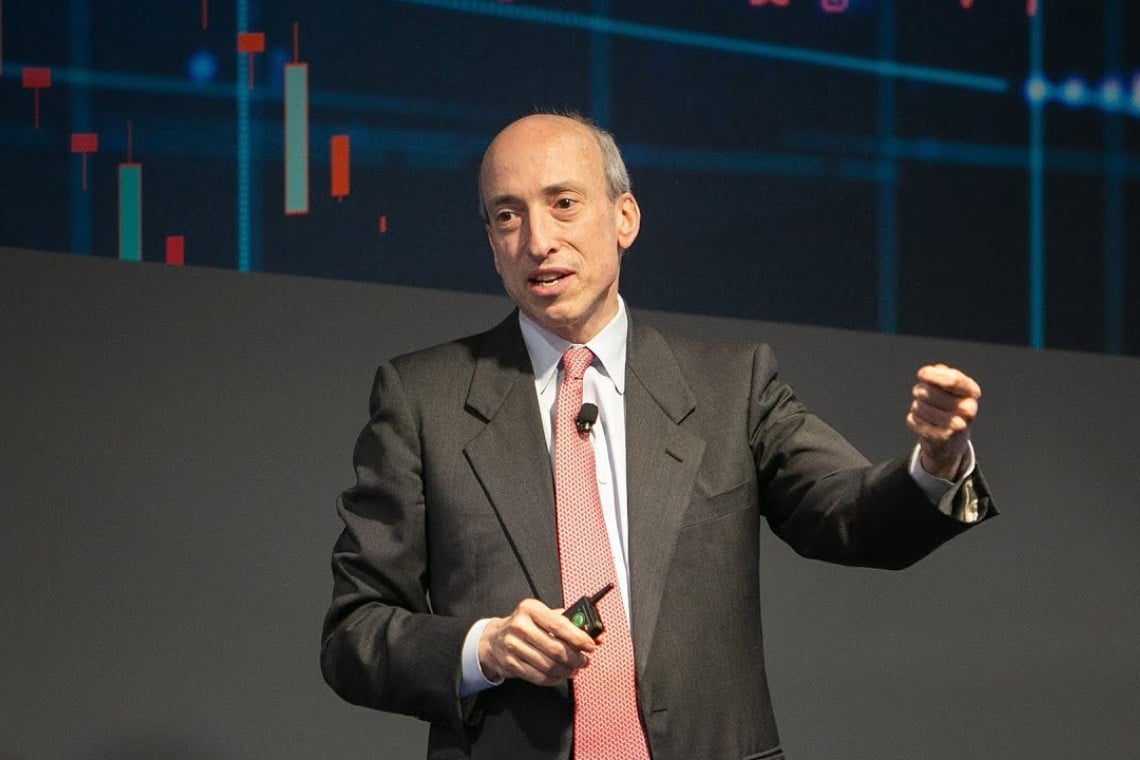A couple of days ago, news spread on the web via an AI platform that current SEC Chairman Gary Gensler would resign following an internal investigation.
There was actually only one source from which the news came, and it was not even an authoritative source on the matter. But given the climate of hatred circulating in the crypto industry against Gensler the news was widely reported, and was picked up as true even by some news outlets.
Instead, as was presumed from the beginning, it was fake news, so much so that FOX Business Network (FBN) correspondent Charles Gasparino has definitively denied it.
Summary
AI-generated news about SEC chairman Gary Gensler
After it was released, analyzing the text of the alleged with ZeroGPT, i.e., an AI-generated text detector, it was discovered that 96.8% of that text had been generated with an artificial intelligence tool.
The problem is that the various AI tools that produce texts, such as the famous ChatGPT, are unable to verify the reliability of sources.
Therefore, if they find information online that comes from sources they believe to be reliable, they believe it to be true regardless.
In fact, they do not perform source verification, and more importantly, they do not seek confirmation, as competent journalists do. In this case there was absolutely no confirmation, so it was more than plausible that it was fabricated news.
If indeed Gensler had resigned, the SEC would have made it known, because a government agency could not hide the resignation of its chairman if it did not want to run into very serious repercussions from the government itself.
Therefore, in the absence of official confirmation the news was not to be taken as true.
The indiscretion
Indeed, some of the newspapers that reported the alleged news highlighted it as an indiscretion, and not confirmed news. Yet again, the basic mistake was failing to actually verify what the original source was.
In fact, the original source was not people with knowledge of the facts, as written in the original news story, but an artificial intelligence-based text generation software.
Thus, it was actually not even a rumor, but for all intents and purposes fake news.
However, it is not known which source the AI software that generated it drew from, but it is evidently programmed poorly because it is unable to only pull from reliable sources.
Who fabricated the news?
Now the real question should be: who fabricated this fake news?
So, it is certainly completely made-up news, but the AI software hardly invented it. This one probably just wrote the text of the article without specifying that the source from which he drew it was not authoritative.
It may also be that the original invention was made perhaps by some satirical author, and the AI software was unable to distinguish satire from truth-telling.
Moreover, it is worth noting that no experienced journalist believed in this alleged news story, precisely because one only had to do a minimum of verification to see that there was no confirmation at all.
Only artificial intelligence software and the inexperienced believed it, that is, those who do not know how to do the proper verification to understand whether a news story comes from reliable sources or not.
Looking past the AI’s fabrication on Gary Gensler (SEC): the underlying problem
The second question that comes to mind is: could fake news produced by artificial intelligence be a problem?
For non-experts certainly yes, since most people are unable to verify for themselves whether a news story is confirmed or not.
In contrast, for experienced journalists it should not be a problem for now, because they have long been extensively accustomed to recognizing fabricated news from confirmed and verified news.
Unfortunately, however, journalistic quality nowadays often turns out to be insufficient, with many incompetents in the field spreading news without being able to verify whether it is true or not. To avoid being fooled by AI it is better to always rely only on sources that you consider reliable, and ignore everything else if it comes from sources about whose reliability you have no certainty.




